Decades of segregation and mistrust complicate efforts to rekindle vibrant history of Las Vegas' Historic Westside
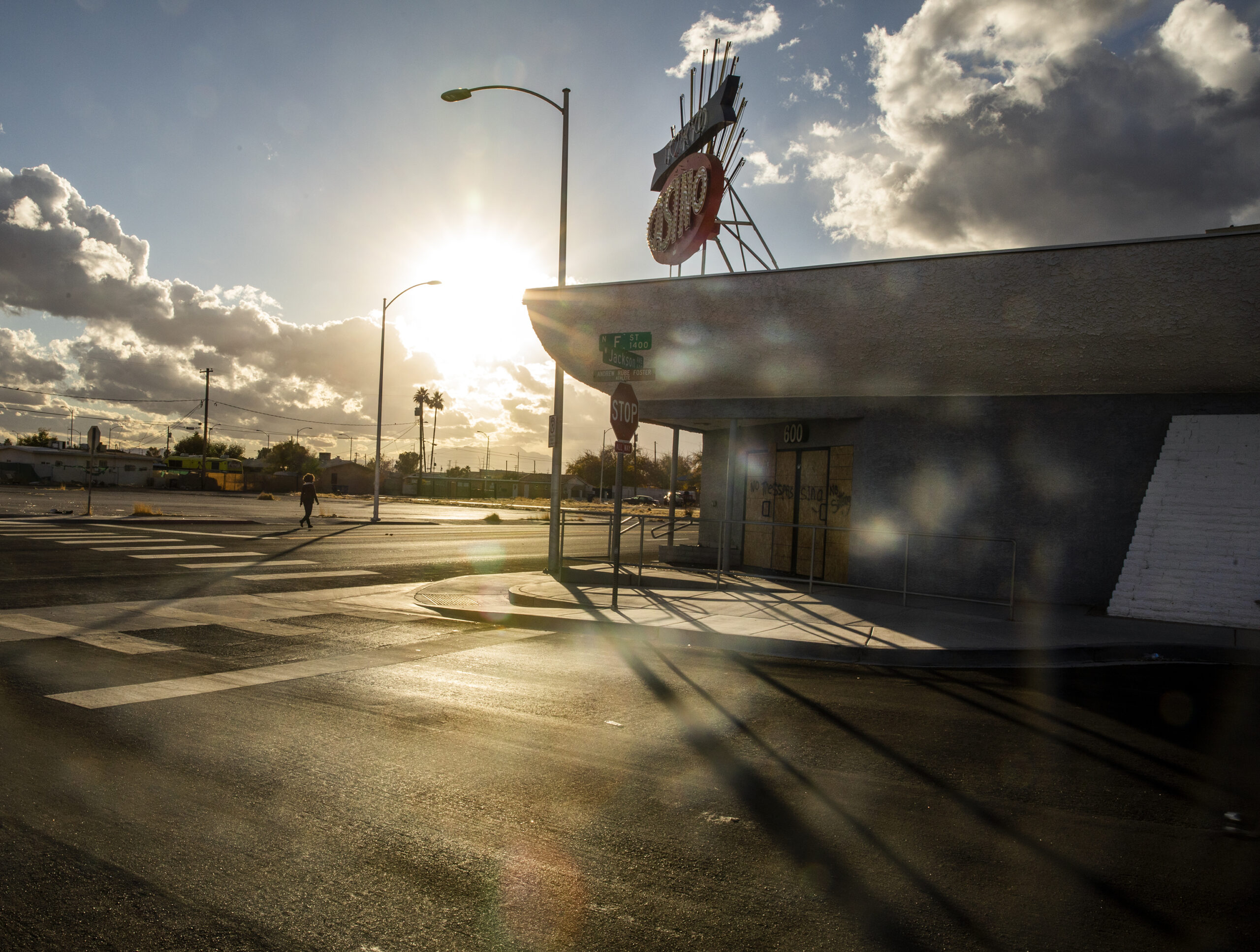
Just a stone's throw from Las Vegas' dazzling downtown sits what looks like a ghost town in comparison. Vacant lots and boarded up buildings sit in stark contrast to Glitter Gulch's kaleidoscope of casinos and bustling crowds of tourists drunk on Las Vegas.
But it wasn't always this way.
Now known as the Historic Westside, the neighborhood once gave the Las Vegas Strip of the '50s a run for its money. Segregation in the "Mississippi of the West" kept Black Las Vegans off of the Strip and led to Jackson Avenue — commonly referred to as Jackson Street — becoming its own kind of Strip for the Westside, brimming with bars, restaurants and clubs.
At the edge of the neighborhood on Bonanza Road, the Moulin Rouge Hotel and Casino— the first racially integrated casino in Las Vegas — lived a short but glamorous life as the neighborhood's crown jewel.
After performing at Strip casinos where they couldn't stay or even walk through the front door, Black entertainers crossed the tracks to stay at the house of hotelier Genevieve Harrison. Famous faces from Sammy Davis Jr. to Pearl Bailey to Nat King Cole could sometimes be seen on the porch of the Harrison House or traversing Jackson Street, sometimes bursting into spontaneous performance.


When desegregation in the '60s gave Black Las Vegans the option to live, work and recreate outside of the Westside, some residents left and Jackson Street and the Westside started to decline, leading to the boarded-up buildings and vacant lots that house the ghosts of a once booming neighborhood.
The community has been hard-hit economically. Census estimates from 2013 show the median household income for the neighborhood's zip code to be $27,900, about $17,800 less than the city overall.
Demographics have also changed. The once predominantly Black neighborhood now has a slight majority of Latinos, with 40 percent of residents identifying as Latino and 38 percent as Black.
But even absent some of its original buildings, prosperity and residents, the neighborhood is home to a strong community that's working to return its small corner of Las Vegas to its former glory.



Two efforts to achieve this goal — one led by community organizers and the other by the City of Las Vegas — are running concurrently, sometimes aligning, sometimes colliding. Both groups are aiming to incorporate the neighborhood in their work, but a history of racism and tension between the city and the Historic Westside has made community members skeptical of the city's intentions and wary of their plans.
The city's plans to revitalize the Historic Westside — which is roughly bordered by Owens Avenue in the north, Interstate 15 to the east, U.S. Route 95 to the south and Martin Luther King Boulevard to the west — have been in the works at least since 1994.
For decades, plans would be drafted only to be shelved in a continual cycle of ideas followed by inaction. The most recent city effort is the 200-page HUNDRED (Historic Urban Neighborhood Redevelopment) Plan from 2016, which specifies that Westside development must be community-led and celebrate the area's history. It includes eight general project areas with design concepts and policy proposals.
But with the recent creation of the first phase of the plan, called the HUNDRED Plan in Action, it appears city-led redevelopment in the Historic Westside is finally on the horizon. The action plan details the first round of development projects — some altered or expanded from the original plan — and the city has broken ground on the first of its ambitions, the $3.2 million Legacy Park honoring the Historic Westside that sits a few blocks away from the neighborhood's official borders.
"The plan that we're executing on is a community-driven plan,” said Ward 5 City Councilman Cedric Crear, a native and current resident of the Historic Westside who was involved in the plans before taking office in 2018. “And I can say that firsthand, because I was a part of a community that gave my input on things that the community wanted to see what it wants to do."
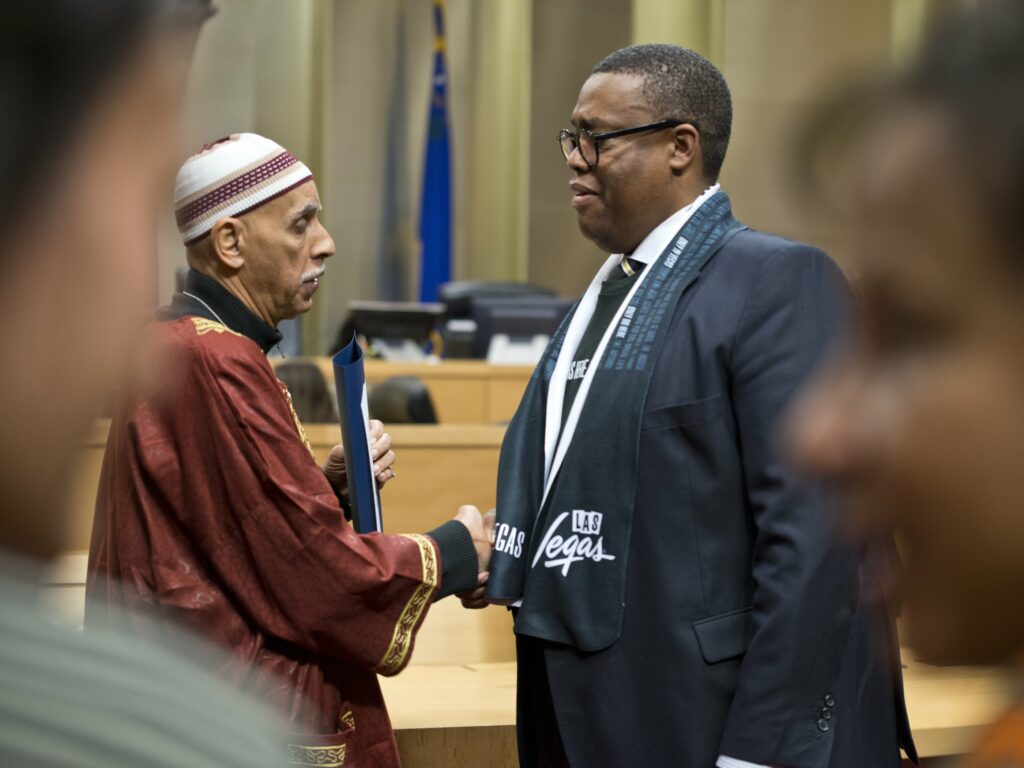

Though Crear and the city have branded the HUNDRED plan as community-driven, some community members have raised eyebrows at the characterization.
Some say they only recently became aware of the forthcoming changes because of community organizations such as the Historic Westside Revitalization organization and the Historic Westside Neighborhood Association. Of those who are aware, some say they are unhappy with some aspects of the plan, leading them to go forth with their own plans for their neighborhood.
"I know that Councilman Crear has basically said in public that he's taken this and ran with it since his administration has gotten into office, but currently these little things that we're trying to ask, we're not seeing a conversion for," said TaShika Lawson of Historic Westside Revitalization. "We actually are working behind the scenes right now trying to figure out how we can get [our plan] best in place."
A foundation of distrust
For Deverynn Bryant, living in the Historic Westside is like shadow boxing: not knowing who your opponent is and being unable to predict where they will hit next. It's a fight against a history of racism and inequality that is still active today.
Bryant, a member of the Historic Westside Neighborhood Association, said the community is dying because of the city's inadequate strategic planning, decisions to demolish buildings and leave lots vacant, and the choice to place all major homeless services around the neighborhood gateways rather than in other places in the valley.
"So then, what it looks like for a person that's not from here, 'Look at how Black people treat their community,'" Bryant said. "So they give us the worst of the worst of the worst. And then it looks like it's a reflection of us, and how we treat and how we feel about our community, and it's not that."

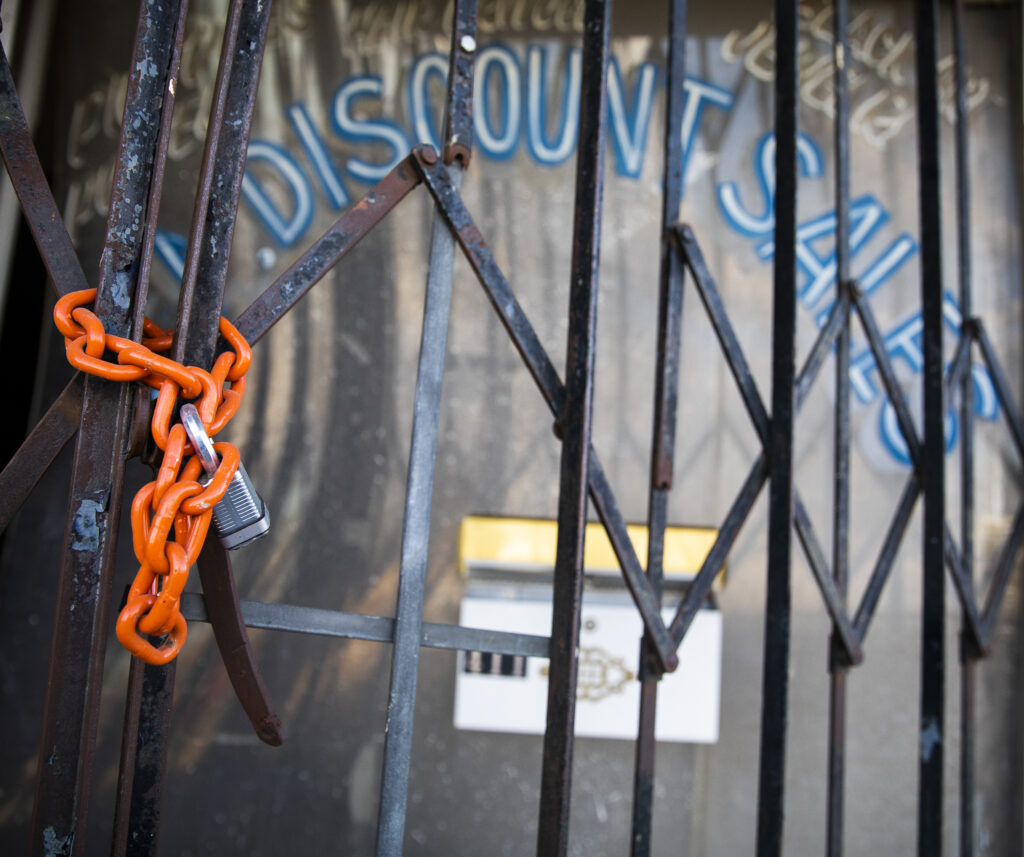
Bryant said watching the development of a beautiful downtown area has been difficult. He feels there's an "invisible wall" separating the Historic Westside and its thriving neighbors.
That phantom wall has materialized more than once.
The city shut down roadway connections between the neighborhood and downtown on D, F and H streets in the 1960s, leading Westside residents to call it the "iron curtain" between the community and the rest of the city. In 2008, the city once again closed F Street, which features a white "Historic Westside" sign on the wall of the freeway that announces the neighborhood to downtown visitors. Residents then marched and sued, calling the closure “the worst incident of race-based segregation” in the city’s history.
"People who've lived in the neighborhood for a long time are exhausted, mentally drained from the relationship with the city," Bryant said.
Ward 5 Chamber of Commerce President Katie Duncan, who worked with the city for eight years on the Art Commission through the 90s and early 2000s, said she has witnessed the city hearing and considering ideas for the Historic Westside only to implement them downtown instead.
In the ‘80s, for example, businessman and activist William "Bob" Bailey proposed ideas to rejuvenate the decaying Jackson Street as a pedestrian mall matching the ambience of the legendary Town Tavern casino. Those plans never came to fruition because of lack of funds, including the city recalling a loan fund, but eventually made their way to Fremont Street in the form of "The Fremont Experience."
More recently, Duncan said the Art Commission suggested creating the Dr. Martin Luther King Center for the Performing Arts Center at Enterprise Park on Lake Mead Boulevard and Martin Luther King Boulevard. But then The Smith Center for the Performing Arts in Symphony Park about two miles away became the cultural hub for everything from Broadway shows to band performances for the school district's most talented students.
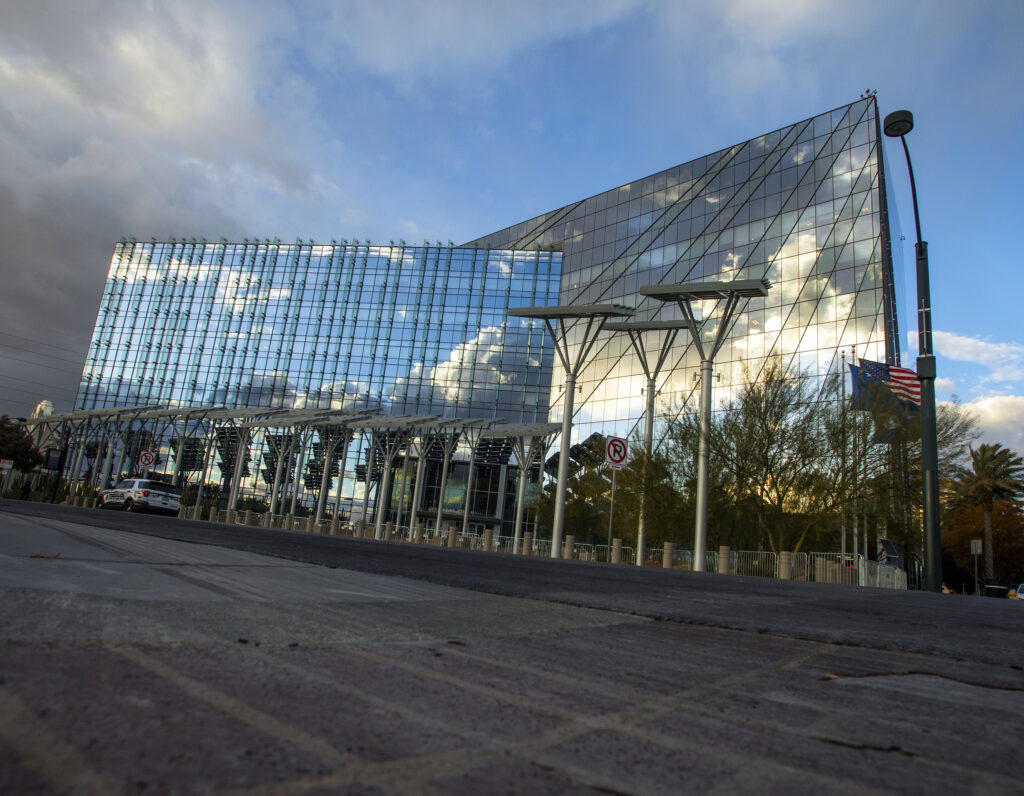


The distrust of the city continues today.
In the Historic Westside Revitalization's work going door-to-door, Lawson said the overwhelming feeling from residents is that they are "afraid" of the city. Lawson said the organization has ongoing dialogue with most of the community, but a mention of the City of Las Vegas brings an "almost immediate shutdown" in communication.
"People in this neighborhood are so afraid that the city is just going to come in and take their property and take their business and bulldoze everything in between," she said, speaking to a history of the city demolishing buildings in the area. "Their fear is genuine."
Crear, the only Black member on the City Council, said he understands the skepticism residents have for the city and that he, too, has found the timeline of development in the Historic Westside to be "frustrating." Crear said he has been addressing residents' distrust by being transparent and demonstrating that action is being taken through the plan and ongoing efforts.
"It's a lack of trust. We've got the whole thought of 'this is just another same old, same old.' And that's not the case," Crear said.

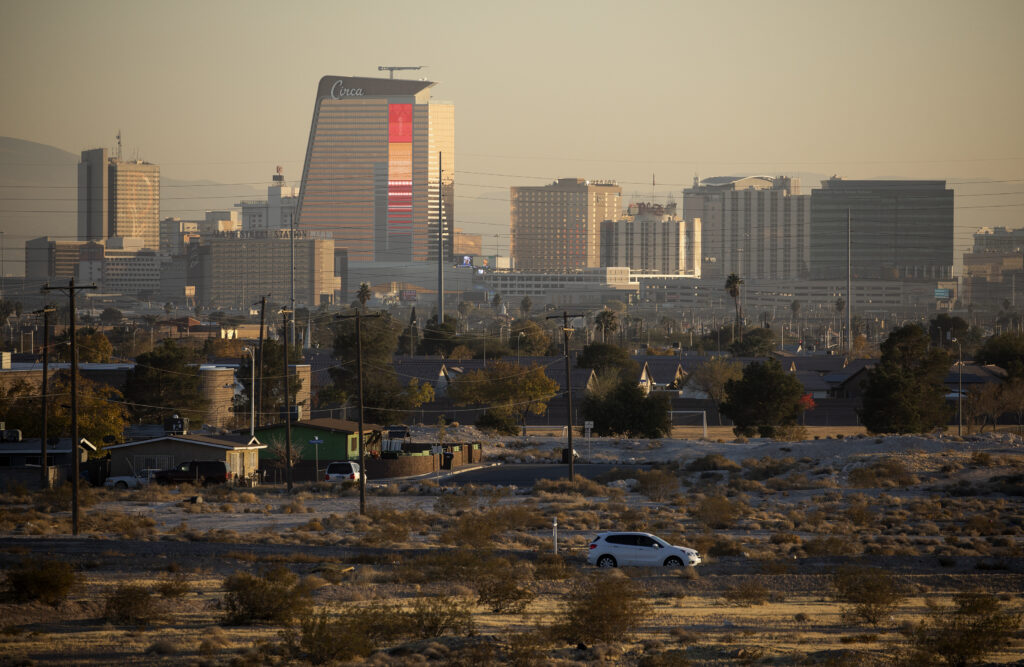
Bryant said there is a possibility for the city to repair relations with the neighborhood and become an example of improved race relations between historically marginalized residents and historically oppressive governments. But the city first needs to have sincere intentions.
"The City of Las Vegas is thieves and liars. I'm open to having a new relationship with them but so far, one thing you have proven is you're a thief and you're a liar and you're kinda racist. And that's where we started," Bryant said. "So if we can fix those, we probably can get somewhere."
The HUNDRED Plan
Though the HUNDRED Plan is the foundation for the updated action plan, there are several differences between the two, which were created four years apart under different councilmen.
The original plan, under former Councilman Ricki Barlow, was created through six meetings with stakeholders throughout 2015, including a three-day workshop. The action plan came from a December 2019 meeting with "some 60 Historic Westside stakeholders, city staff and design professionals" to advance the plan through an implementation strategy, according to the HUNDRED Plan in Action.
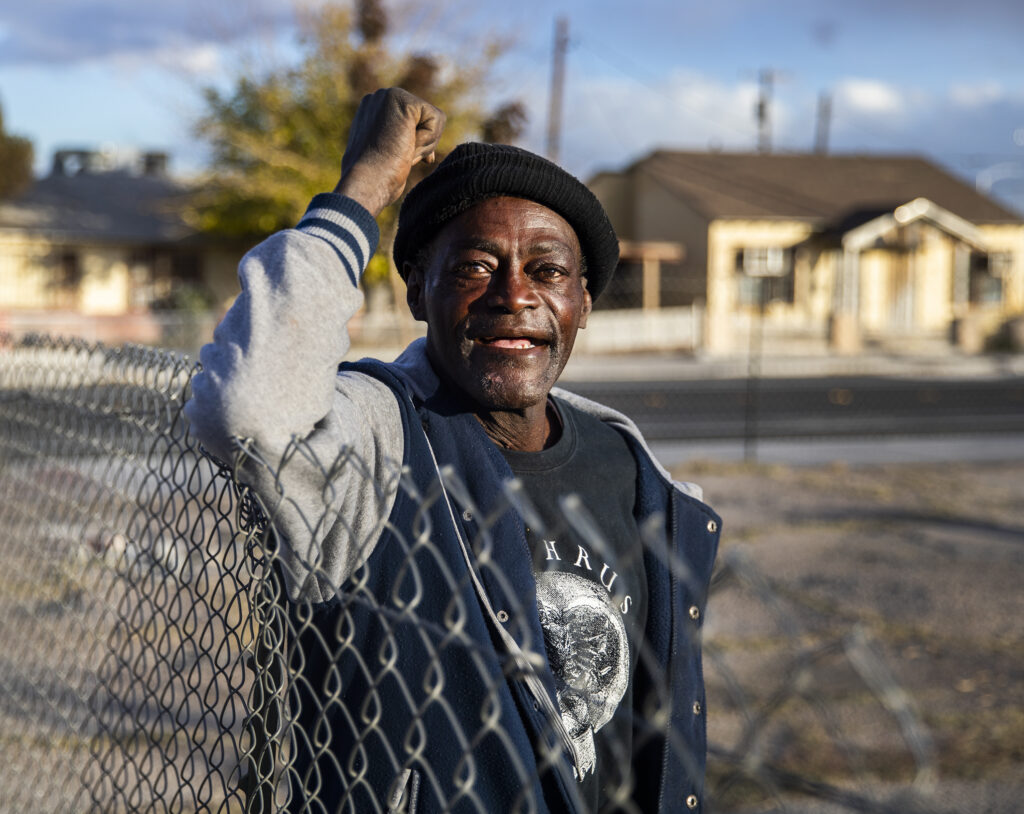

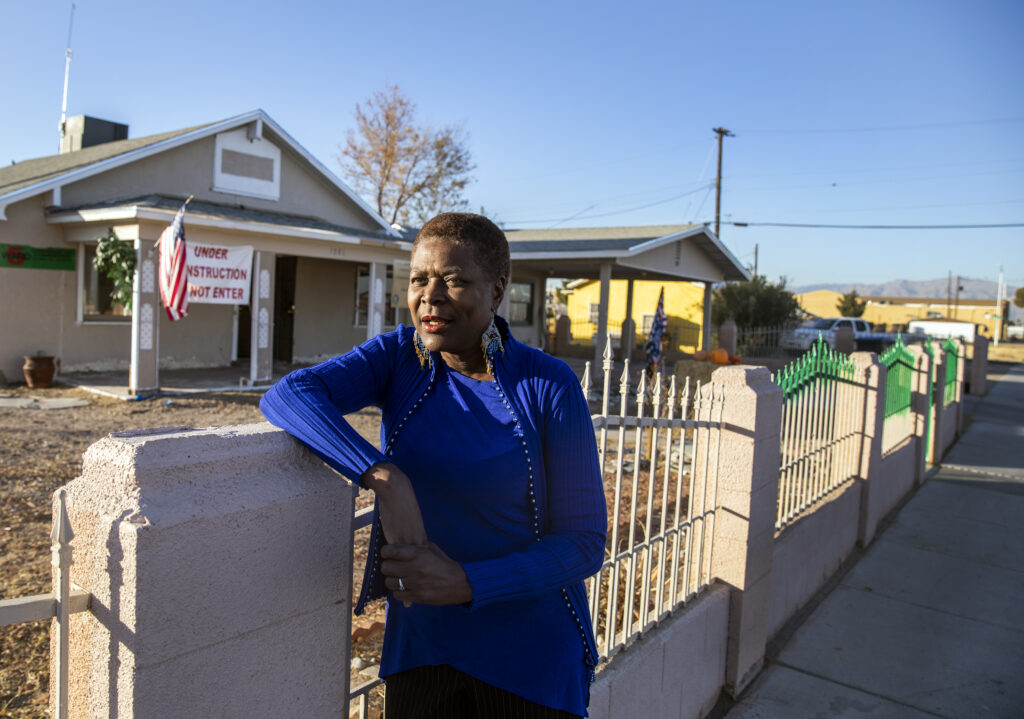
One difference between the two versions is that the action plan addresses health care inequality in the Historic Westside through creating a holistic health center that will target "long-standing issues of equity around access to healthcare and wellness outcomes."
The neighborhood's zip code has the third highest age-adjusted death rate from diabetes in Clark County, and about 37 percent of residents under the age of 64 do not have health insurance, according to the Southern Nevada Health District.
"Coming out of a pandemic, you can really see that healthcare disparity in many underserved communities, especially in the African American community and the Latino community," Crear said. "We're looking to bring in … a facility that is forward thinking and going out into the community and working to dispel all those pre-existing conditions [of health care inequity]."
Other changes may not be as welcome.
The action plan designates the site of the famed Moulin Rouge Hotel and casino — which after years of decay, fires and demolition is now mostly dirt and desert brush — for mixed-income housing on the north-side lots and a casino or entertainment venue on the southern lot. Though Crear said it is "far from the truth" that the city is trying to take away the Moulin Rouge's history, some community members have voiced opposition to the plans because they want to preserve the essence of a casino with a legacy that has reached almost mythical proportions.

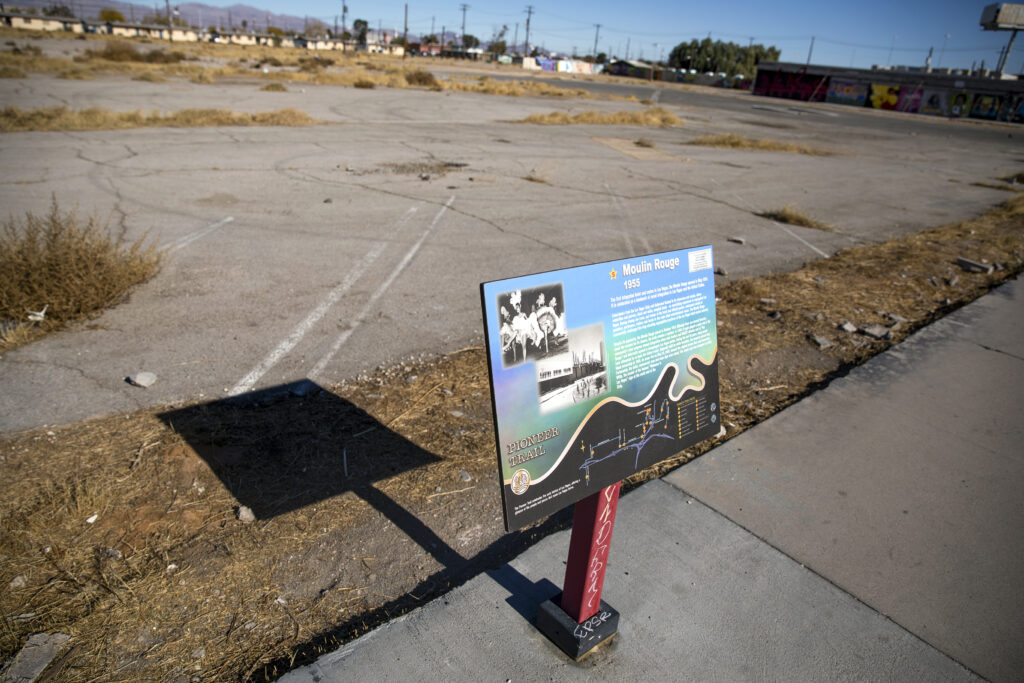
"They take our history and just do what they want with it," Bryant said, asserting that the government would never tear down Caesars Palace and then put public housing on the site. "They just would never do that anywhere else, so it's so disrespectful to not only us in the community, but it's also disrespectful to that property."
The Moulin Rouge site, which has protections through the U.S. National Register for Historic Places and the Las Vegas Historic Property Register, recently sold to an investment firm in Australia that said it plans to build a casino on the property.
Duncan, who was heavily involved in creating the original plan, said the most striking change in the implementation plan was a proposal for a new African American history museum.
The original plan called for public and private investments to upgrade community member Gwendolyn Walker's 24-year-old Walker African-American Museum and Research Center near Jackson Avenue. The plan stated that "this project has the potential of defining Jackson Street as the cultural center for the African American community in Las Vegas."
The new museum and its accompanying performing arts theater will sit on the corner of D Street and Washington Avenue and is expected to be finished in 2025, according to the action plan. The city is still looking at funding sources, but is expecting funds to come from the City of Las Vegas, Las Vegas-Clark County Library District and private donors.

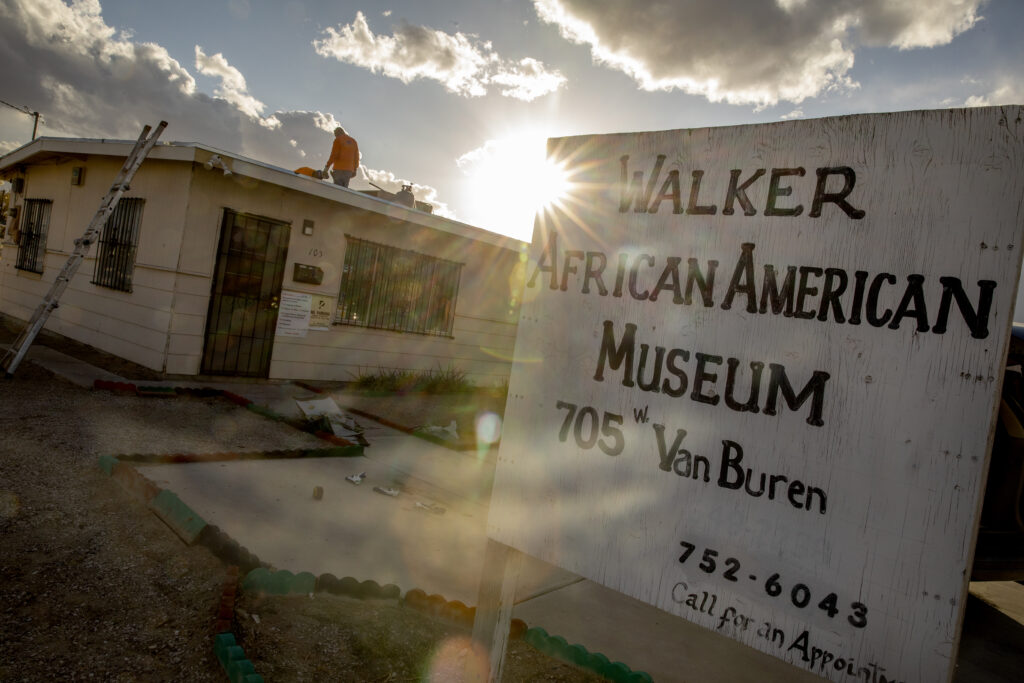

Walker, who also was involved in the original plan but not the more recent action plan, said she was "blindsided" when she heard of the city's plan for a new museum just a few days before the city published the action plan in July. Though she acknowledged that she may have missed an email from the city about the new museum, Walker said she has been heavily involved in city meetings and community happenings for years.
"I'm more hurt than angry. I'm more hurt because I've tried to participate whenever I could in everything," she said. "Every meeting that I ever was at, I've made it a point to bring up the Walker museum. A lot of the times I had our plans there, and knowing that our plans is in the HUNDRED plan, you would think the African American museum that they would be considering would be ours."
But Walker added that "it's OK because we'll keep on doing what God's got us doing."
For Duncan, it's another example of the city taking ideas from the neighborhood and then implementing them without the participation of the community.
Crear said the change in plans came from an expansion of the vision for the neighborhood museum.
"We're talking about building a facility that is going to be world class and that will compete with any major museum around the country, so the scope would be much greater," he said. "Gwen Walker has put together something that we all can be proud of. We plan to work with her as we move forward with this."
Crear said the city plans to work with other community members like Walker who are "planting a lot of seeds in the community already" with the action plan.
Walker said she was invited to attend a meeting with fellow museum professionals, including representatives from the Mob Museum, at the beginning of December to talk about the new museum. Though she said she "swore" to hold her tongue, Walker did comment on the plan for the museum and was met with silence before the meeting continued.
Robert Summerfield, director of planning, said the city went beyond standard communications, such as posting on community bulletin boards and sending out notices, in outreach efforts for the HUNDRED Plan, particularly during the process of creating new zoning codes. Beyond HUNDRED plan-specific meetings and the plans being agenda items for Ward 5's community forums and City Council meetings, Summerfield said city officials met individually with property owners and presented plans at community meetings, specifically those of the many faith-based organizations that freckle the neighborhood.
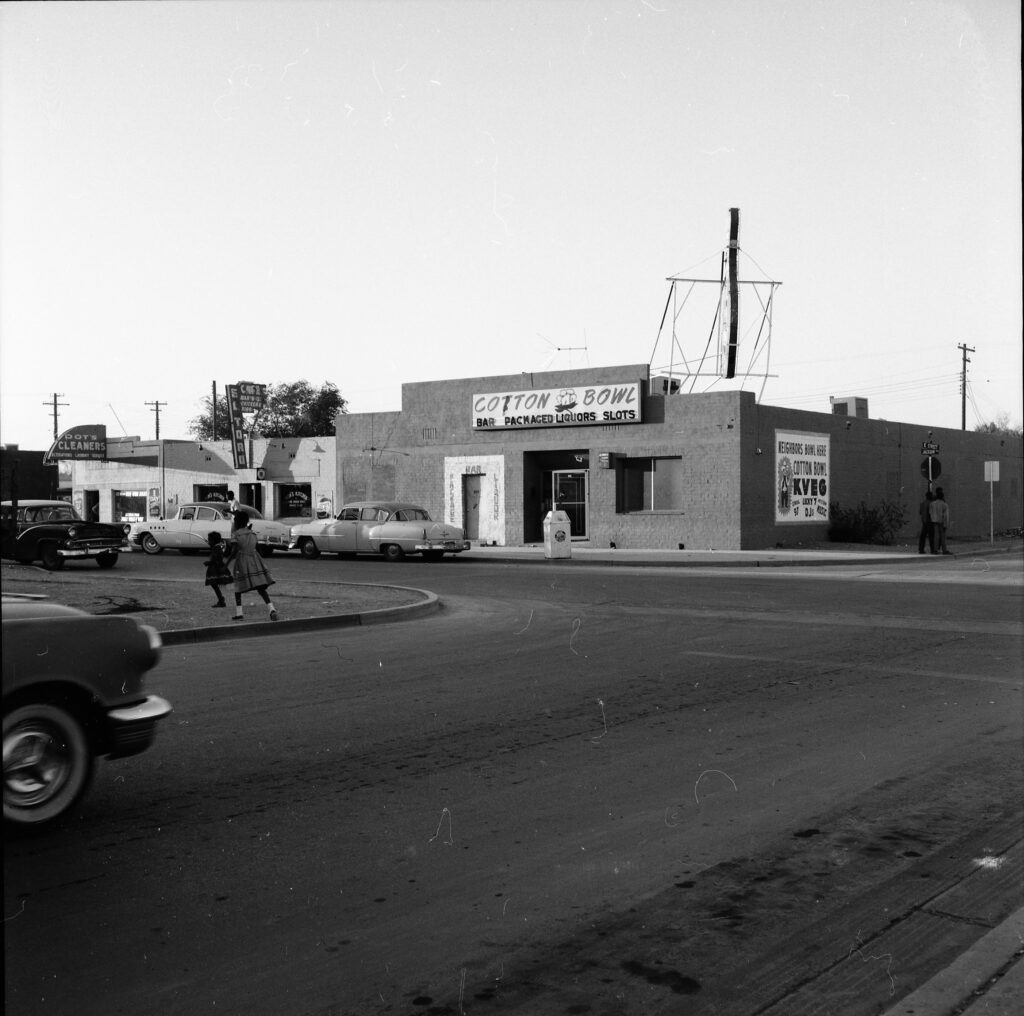

"We really wanted to understand what their plans for the neighborhood, for the community, for the district were, so that we could make sure that what was best for them," Summerfield said. "And the code would be something that would help them achieve that vision."
But some community organizers said they are not seeing that collaboration and communication to the extent they would like.
Lawson described the city's outreach as riddled with "misinformation" and "broken communications" that have left many residents unaware of the city's revitalization efforts until community organizers approached them.
Even within the meetings from the city, Lawson said there has not been enough time for public comment and questions. Bryant also emphasized that holding meetings doesn’t necessarily mean that community members are being heard.
"Just because you have meetings doesn't mean you're listening," Bryant said.
Frustrations lead to action
The original HUNDRED Plan included official collaborations between the community and the city. It called for a newly created Westside Revitalization Commission or a community development corporation with "significant community representation that is focused solely on revitalization of the neighborhood" and that would oversee all phases of the plan.
So far, no commission has been created, according to Lawson, though she said she has communicated to officials her willingness to help create one. A commission is not mentioned in the HUNDRED Plan in Action.
The plan also stated that the city "anticipates" a new Historic Westside nonprofit group that will "support the community and facilitate events and programming" and "connect residents with the new investments and opportunities in the community through education, information sharing and advocacy."
Duncan, who is also the executive director at the Harrison House, a historical home that now hosts a nonprofit that helps the community preserve historical buildings, questioned why there needs to be a new Historic Westside nonprofit when there are several already in existence. She said she has offered to work with Crear’s office though either the Ward 5 Chamber of Commerce or the Harrison House serving as the community development corporation for the plan, but no partnership has yet been formed.
Without these formal partnerships with the city, some community members are looking for their own way to bring their vision of the Historic Westside to life.



Duncan and the Historic Neighborhood Association are leading the charge to try to make the Historic Westside a national historic district, which would provide the neighborhood with greater protections for historical preservation after its history of demolition.
Over the summer, Bryant and Historic Westside artist Courtney Haywood started the Historic Westside Development Corporation. In an interview with The Nevada Independent in September, Bryant said the company was still in the early stages, including thinking of ways development can help the community, talking with residents about what they would like to see and creating early renderings.
"A lot of this stuff is new for us. We're not developers … but we've been put in a situation where we're like, well, whether you're a developer or not you better figure something out," Bryant said. "Our people have been so torn down. We have to build up our people. So what programs or what things can we put into action that would help our people?"
